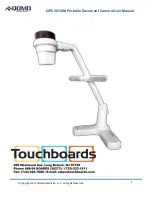
V1.02
Thom Hogan’s Complete Guide to the Nikon D300
Page 70
noise, as it is the underlying electron current produced
without light). On a D300, this results in the following values
for the green channel in my testing (rounded to the nearest
half
29
):
ISO
200 400 800 1600
3200
12-bit
11.0EV
30
10.5
9.5
9.0
8.0
14-bit
11.5
10.5
10
9.0
8.0
I want you to notice three things about this chart:
•
The reported range in this chart is higher than you can
actually use.
Eleven stops of range seems pretty good, but
it’s not necessarily
usable
camera dynamic range. At the
bright end (as we near full well capacity) photodiodes get
non-linear. At the dark end, signal levels near or equal to
the noise level are unacceptable visually (i.e. too visually
“noisy”).
•
Higher ISO values mean less dynamic range captured.
Noise increases with ISO, thus the possible capture range
gets smaller. As you can see, this is probably trivial (just
over a stop) at up to as high as ISO 800, but each ISO
boost does rob you of more and more capture capability.
•
14-bits is marginally better than 12-bits.
There are some
very minor differences between 12-bit and 14-bit
captures, and those differences get numerically smaller
(but not in percentage) as you boost ISO.
With a DSLR,
you
are in charge of getting the exposure
“right.” That means that you have to consider what the D300
can capture (camera dynamic range) versus what you’re trying
to photograph (scene dynamic range). I’ll have much more to
say about exposure as we proceed to learn about the camera
(see “Metering and Exposure” on page <237>, for example).
29
I’m hesitant to report with more precision as I don’t think that my testing
procedures are good enough to be more accurate. Besides, at this stage of our
discussion, we don’t need more accuracy, just the basic gist.
30
1 EV = 1 stop.















































